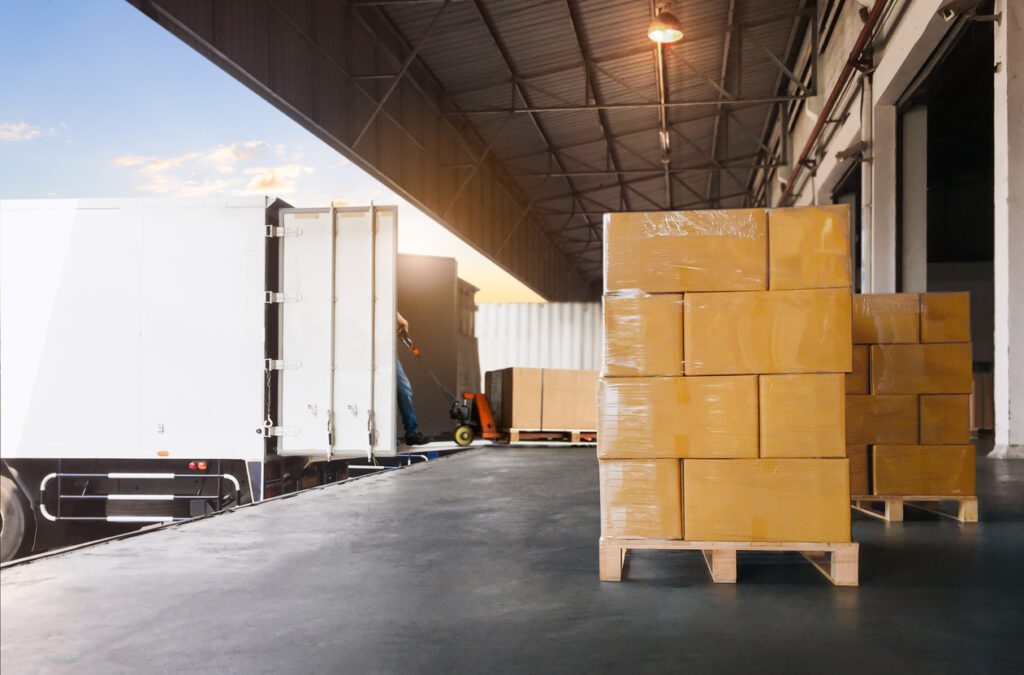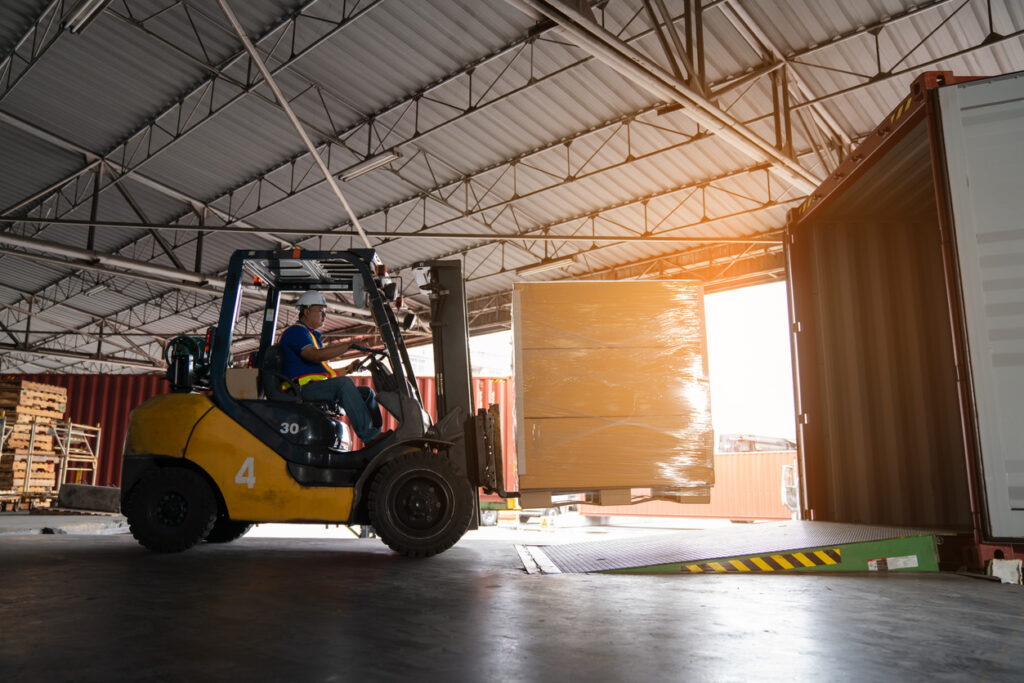
Learn how LTL shipping works, its benefits, and best practices for cost-effective freight transportation across Canada and the USA.
Less Than Truckload (LTL) shipping is a cost-effective freight solution for businesses that don’t require a full truckload. By consolidating multiple shipments from different customers into a single truck, LTL reduces costs, minimizes empty space, and offers flexible logistics options—ideal for small to mid-sized businesses across Canada and the USA.
This guide covers:
- What is LTL shipping?
- The key benefits of LTL shipping
- LTL shipping versus other methods
- Tips for optimizing your LTL shipments
- LTL shipping FAQ
- How ShipNorthAmerica supports LTL shipping
Whether you’re shipping raw materials, retail goods, or specialized freight, understanding LTL can help you cut costs while maintaining reliability.
Why Businesses Need LTL Shipping
Many companies face logistical challenges when shipping smaller freight loads:
- High Costs: Booking a full truckload (FTL) for partial shipments wastes money.
- Inefficient Space Use: Empty truck space increases fuel costs and emissions.
- Limited Flexibility: Infrequent shipments delay deliveries and strain inventory management.
LTL solves these problems by:
✔ Reducing Costs – Pay only for the space you use.
✔ Increasing Sustainability – Fewer trucks on the road lower carbon footprints.
✔ Improving Transit Options – Access to carrier networks across North America.
In Canada, where long distances and remote locations can complicate logistics, LTL is especially valuable for regional and cross-border shipments.

1. How LTL Shipping Works
Being experts on all things shipping and transport, we often get asked: what is less than truckload shipping? Here’s a quick overview of how it works.
LTL carriers combine shipments from multiple customers, optimizing routes through a hub-and-spoke model:
- Pickup: Local terminals collect freight.
- Sorting: Shipments are consolidated at regional hubs.
- Linehaul: Freight moves long-distance via full truckloads.
- Final Delivery: Local terminals dispatch shipments to recipients.
Key Factors in LTL Pricing (Canada & USA):
- Freight Class (NMFC in USA, NMFTA in Canada) – Based on weight, density, and liability.
- Distance – Longer hauls cost more.
- Accessorials – Liftgate, inside delivery, or residential fees.
Canadian Compliance Note:
- Weights & Dimensions: Follow National Safety Code (NSC) for legal load limits.
- Border Crossings: Ensure proper customs documentation (e.g., ACE eManifest for USA-bound freight).

2. Key Benefits of LTL Shipping
Less than load shipping is a cost-effective way of shipping goods in Canada and the USA. Here’s why.
Cost Efficiency – Ideal for shipments between 150-15,000 lbs, LTL allows you to pay only for the space you use rather than an entire truck. The shared-cost model means significant savings compared to FTL, especially for regular partial shipments. Carriers use sophisticated freight classification systems to ensure fair pricing based on weight, dimensions and freight class.
Greater Flexibility – With multiple daily departures between major hubs, LTL offers more scheduling options than FTL. This is particularly valuable for businesses with fluctuating shipment volumes or just-in-time inventory needs. The extensive terminal networks of LTL carriers provide reliable service even to remote areas across North America.
Enhanced Tracking – Modern LTL providers offer advanced visibility tools, including real-time GPS tracking, electronic logging devices (ELDs), and automated delivery notifications. This level of transparency helps businesses better manage their supply chains and keep customers informed.
Reduced Carbon Footprint – By consolidating multiple shipments, LTL maximizes trailer space and minimizes empty miles. This efficient approach means fewer trucks on the road, lower emissions per shipment, and progress toward sustainability goals – aligning with Canada’s 2030 Emissions Reduction Plan.
The combination of these benefits makes LTL an increasingly popular choice for businesses looking to optimize their logistics operations without compromising on service quality or reliability. Whether shipping raw materials, retail goods, or specialized freight, LTL provides a practical solution that scales with your needs.

3. LTL vs. Other Shipping Methods
Deciding which option is right for you depends on your specific needs. Here’s how Less Than Truckload Shipping (LTL) stacks up against other options like full truckload (FTL), parcel delivery, and others.
LTL (Less Than Truckload)
- Best For: 1-6 pallets (150-15,000 lbs)
- Ideal When: You need to ship partial loads cost-effectively
- Key Advantages: Pay only for space used, frequent departures, access to carrier networks
- Drawbacks: Longer transit times due to multiple stops, potential for handling at terminals
FTL (Full Truckload)
- Best For: 10+ pallets (filling 26-53 ft trailers)
- Ideal When: You have enough freight to fill a truck or need dedicated service
- Key Advantages: Direct point-to-point service, faster transit, less handling
- Drawbacks: Expensive for smaller loads, less frequent availability
Parcel Shipping
- Best For: Small boxes (<150 lbs)
- Ideal When: Shipping individual consumer items or documents
- Key Advantages: Door-to-door convenience, fast delivery for small items
- Drawbacks: Strict size/weight limits, higher per-pound cost for heavier items
Specialized Options (Flatbed, Temperature-Controlled, etc.)
- Best For: Unique freight requirements
- Ideal When: Shipping oversized, hazardous, or perishable goods
- Key Advantages: Custom solutions for special needs
- Drawbacks: Higher costs, limited availability
The right choice depends on carefully evaluating your shipment characteristics against the strengths of each method. Many businesses use a combination of these options to meet different shipping needs throughout their supply chain. LTL often serves as the most versatile middle ground for partial loads that are too large for parcel but don’t require a full truck.
4. Optimizing LTL Shipments
Less than truckload (LTL) shipping is a cost-efficient way to transport smaller freight loads, but maximizing its benefits requires careful planning. Follow these key best practices to reduce costs, minimize delays, and ensure smooth deliveries:
- Accurate Freight Class – Correctly classifying your shipment (based on NMFC or NMFTA standards) prevents costly reweigh fees and billing adjustments. Factors like density, value, and handling requirements determine the final class.
- Proper Packaging – Secure freight on sturdy pallets, use shrink wrap to stabilize loads, and add edge protectors to prevent damage during transit. Proper labeling (including “Fragile” or “This Side Up”) helps carriers handle shipments appropriately.
- Dock Readiness – Schedule pickups and deliveries in advance, ensure loading docks are accessible, and have staff available to assist drivers. Delays due to unprepared shipments can lead to additional fees.
Canadian Regulation Reminder:
- Hazardous Materials – Shipments containing dangerous goods must comply with Transport Canada’s TDG Regulations, including proper labeling, documentation, and handling procedures. Non-compliance can result in fines or shipment rejections.
By following these guidelines, businesses can optimize LTL shipments for reliability and cost savings.
WANT TO LEARN MORE ABOUT LTL SHIPPING?
- Freight Class Guide – Avoid costly reclassifications.
- LTL for E-Commerce – Balancing cost and speed for online retailers.
- Cross-Border LTL Shipping – Navigating Canada-U.S. customs.
- LTL vs. Full Truckload – When to upgrade from LTL.
- Winter LTL Shipping Tips – Handling delays in Canadian winters.
5. LTL Shipping FAQs and Resources
Here are some questions we often get asked about shipping less than truckload.
Q: How is freight class calculated in Canada?
A: Similar to the U.S. (NMFC standards), but carriers may adjust for domestic factors.
Q: Do LTL carriers service remote Canadian areas?
A: Yes, but transit times may be longer (e.g., Northern Ontario, Yukon).
Q: How do I calculate density for LTL freight class?
A: Density is calculated by dividing the shipment’s weight (in pounds) by its volume (in cubic feet). For example, a 500-lb pallet measuring 4’x4’x4’ (64 cubic feet) has a density of ~7.8 lbs/cubic foot. Carriers use this to assign freight classes—lower density typically means higher class and cost.
Q: How far in advance should I schedule LTL pickups in Canada
A: Book at least 24–48 hours ahead, especially for remote areas or hazardous materials. During peak seasons (e.g., holidays), allow 3+ days. Canadian carriers often require extra lead time for cross-border shipments due to customs paperwork.
Other Resources
Need quick reference guides or handy tools for your shipments? Check out these helpful resources:
- Shipping Terms Wiki – Unsure about a freight term or acronym? Our comprehensive glossary explains a range of customs, trucking and shipping terms.
- Shipping Documents – Download standard bills of lading, packing lists, and other essential forms.
- Shipping Label Template – Ensure proper labeling with our ready-to-use template.
Bookmark these tools to streamline your shipping process.

How ShipNorthAmerica Supports LTL Shipping
ShipNorthAmerica’s network of member companies specializes in creating tailored LTL solutions that help you streamline your shipping process. Here’s how we support your LTL needs:
- Tailored Solutions: We understand that every business has unique shipping requirements. That’s why we work with you to develop LTL shipping strategies that meet your specific goals, whether it’s managing one skid or coordinating complex multi-point deliveries.
- Experienced Team: Our account managers bring years of LTL trucking experience to the table. Their expertise ensures that your shipments are handled with precision, from pickup to delivery.
- Advanced Logistics Planning: We use advanced logistics tools to plan efficient routes, consolidate shipments, and optimize delivery schedules to ensure cost savings and timely deliveries.
At ShipNorthAmerica, our member companies believe in personal service and consistent performance. We provide freight solutions that don’t limit opportunities but help them grow. From bulk loads to oversized equipment, our network ensures every shipment meets your needs and exceeds expectations.
Contact us today to request a quote or visit our Member Companies page.
Final Compliance Notes
- All U.S. inbound shipments must comply with CBP ACE eManifest.
- Canadian carriers must adhere to provincial highway weight limits (e.g., Ontario’s 63,500 kg max).
- Hazardous materials require TDG-certified drivers in Canada.
